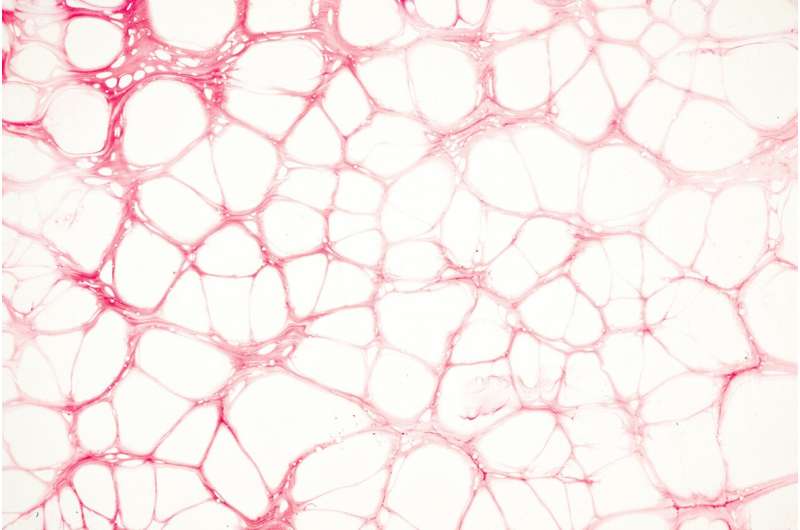This article has been reviewed according to Science X's editorial process and policies. Editors have highlighted the following attributes while ensuring the content's credibility:
fact-checked
proofread
New communication pathway between fat cells paves way for novel obesity therapies, say Spanish scientists

A new mechanism of communication between fat cells has been identified by Spanish researchers. The finding, which will be presented at the European Congress on Obesity (ECO) in Dublin, Ireland (May 17-20), opens up new avenues of research into obesity treatments.
The discovery, by Dr. Ana Gordon, of the Department of Cellular Biology, Physiology and Immunology, University of Cordoba, and IMIBIC, Spain, and colleagues centers on structures called tunneling nanotubes.
Discovered in 2004, these long, thin membranous structures form connections between cells. They allow distant cells to communicate directly and for cargos (such as mitochondria, RNAs and proteins) to be transferred between cells.
They are involved in the development of many diseases, such as cancer and infectious diseases. However, their role in adipose (fat) tissue, and in obesity, has not been studied until now.
Dr. Gordon used immunocytochemical techniques (in which antibodies are used to indentify compounds of interest), 3D culture and several different types of microscopy to examine adipose cells for the presence of the main markers associated with tunneling nanotubes.
In experiments on adipocytes (fat cells) at different stages of maturity, the formation of tunneling nanotubes between distant cells was identified in both adipocytes in the early stages of maturity and in mature adipocytes.
Organelles, including mitochondria and endoplasmic reticulum vesicles, were being transported between cells via the nanotubes. Nanoparticles were also being passed to distant cells through the nanotubes.
Dr. Gordon says, "The discovery that nanoparticles, particles a thousand times smaller than the diameter of a human hair, can travel through nanotubes is incredibly exciting.
"Nanoparticles have a number of benefits, like protecting drugs from degradation, which means that they have great potential for use in drug delivery and in therapies that currently fail with conventional dosage forms.
"In addition, the adipocytes in adipose tissue in obesity are more numerous and larger, which makes it more difficult for blood-borne drugs to access them. In future, it may be possible to use nanotubes to deliver nanoparticle drugs to these hard-to-reach adipocytes."
Further experiments showed that the environment surrounding adipocytes affects the number of tunneling nanotubes. Proinflammatory stimuli can decrease the number of tunneling nanotubes, while high glucose and insulin levels can increase the number of connections. This raises the possibility of stimulating the formation of nanotubes ahead of drug delivery.
Dr. Gordon concludes, "We have demonstrated, for the first time, the existence of an unprecedented mechanism of communication between adipocytes.
"This network of tunneling nanotubes opens up the possibility of novel—and much needed—therapies for obesity."




















